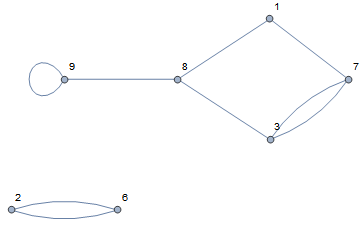** Note: there was an error in the first post and attached notebook which have been corrected . **
The code will depend on how you've chosen to represent the graph in the csv file. The attached assumes the file is a list of pairs representing edges.
SetDirectory[NotebookDirectory[]];
importedEdges = Import["edges.csv"]
undirectedEdges = MapThread[UndirectedEdge, importedEdges // Transpose]
Graph[undirectedEdges, VertexLabels -> "Name"]

 Attachments:
Attachments: